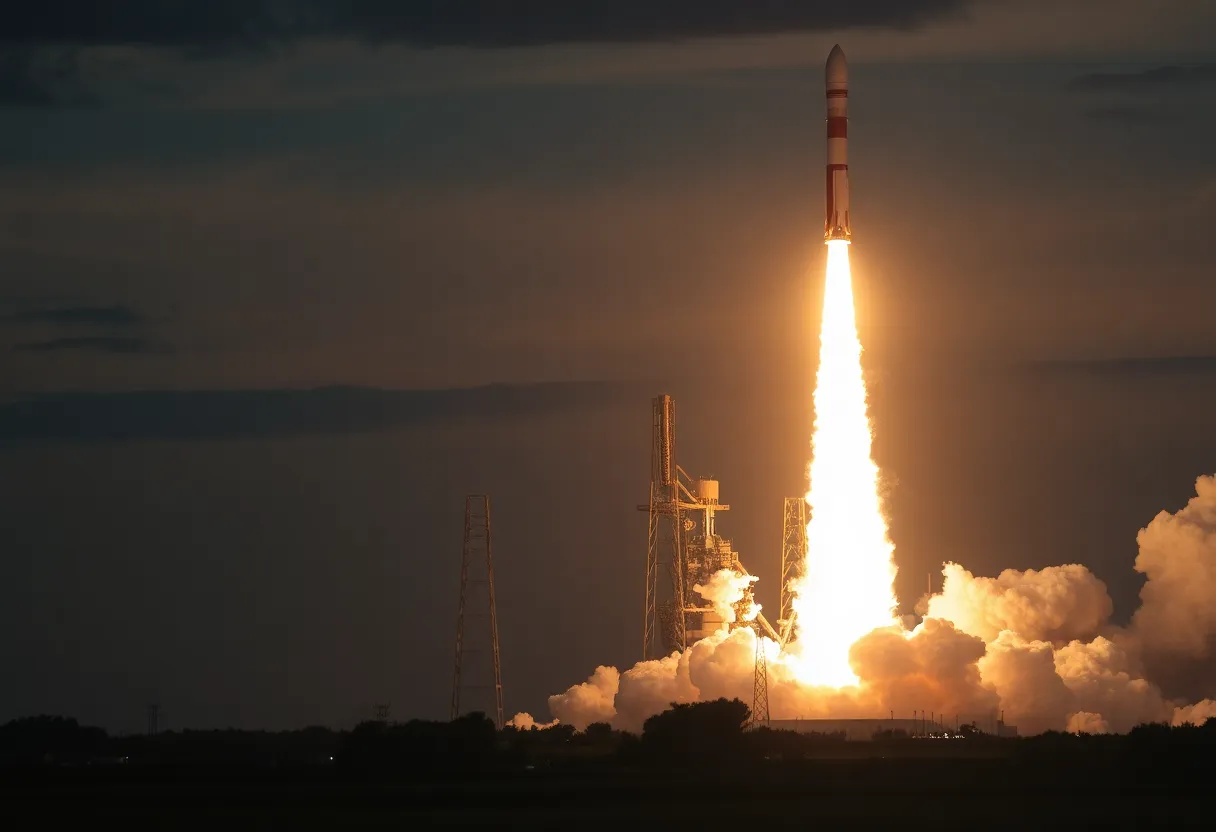

The SpaceX Starship launches amid a backdrop of billowing flames.
Want to target the right audience? Sponsor our site and choose your specific industry to connect with a relevant audience.
Prominent brand mentions across targeted, industry-focused articles
High-visibility placements that speak directly to an engaged local audience
Guaranteed coverage that maximizes exposure and reinforces your brand presence
Interested in seeing what sponsored content looks like on our platform?
May’s Roofing & Contracting
Forwal Construction
NSC Clips
Real Internet Sales
Suited
Florida4Golf
Click the button below to sponsor our articles:
Sponsor Our ArticlesSpaceX’s Flight 9 test of the Starship megarocket ends in disappointment as both stages fail to achieve their landing goals. Despite initial successes, including stage separation and upper stage reaching space, fuel leaks led to catastrophic failures. SpaceX acknowledges the challenges and is committed to improving future missions with the goal of developing a fully reusable spacecraft for lunar and Martian explorations.
On May 27, SpaceX kicked off the much-anticipated Flight 9 of its Starship megarocket from its Starbase facility in Texas. The excitement was palpable as this marked the first time that SpaceX was reusing hardware from a previous flight. Imagine a rocket soaring into the sky, aflame and filled with potential! The mission featured a previously flown Super Heavy booster, but alas, this flight would be another chapter filled with challenges for the space company.
As the launch unfolded, everything appeared to go according to plan. Both stages of the rocket successfully separated, and the upper stage even reached space, marking a notable improvement over past attempts. It was a moment of triumph that sparked hope among enthusiasts and engineers alike. However, the joy was short-lived.
In a disappointing turn of events, both stages of the rocket ultimately failed to make their designated landings. The booster, designed to return gracefully, couldn’t complete its splashdown and broke apart during the return journey. As for the upper stage, it encountered a fuel leak that sent it spiraling out of control before disintegrating upon reentry, likely over the Indian Ocean. Talk about a heart-wrenching sight!
Yikes! It seems leaks were to blame for the issues encountered during this mission. The main tank lost pressure during critical phases of the flight, leading to the dramatic failures. In fact, one of the mission’s protocols included deploying eight dummy Starlink satellites, but the payload door didn’t fully open, creating another setback. Isn’t it fascinating how even the smallest hiccup can derail a colossal operation?
In the lead-up to Flight 9, SpaceX had made significant modifications aimed at reducing the chance of failure. With plans to reuse 29 of the Super Heavy’s Raptor engines, a total of 33 were utilized in the last flight. But despite all the preparations, the disappointment stung like a bee. Prior missions (specifically Flights 7 and 8) had also faced their share of challenges, with the upper stage exploding just after launch due to various issues.
Taking off at 7:37 p.m. EDT, the rocket’s ascent into the sky was nothing to scoff at, fueled by a massive flame and a plethora of hopes. The mission coincides with SpaceX’s aspirations to ramp up their launch cadence, aiming for missions every three to four weeks. With their ambitious plans, the company is definitely trying to push the envelope.
Despite the failures, SpaceX remains undeterred. The company is eager to learn from Flight 9’s mishaps to improve future missions and rocket reliability. They have notified the FAA about the incidents, working closely with the agency to investigate exactly what went wrong. All part of the learning curve in pushing the boundaries of space exploration!
SpaceX is on a mission to develop Starship into a fully reusable vehicle, with dreams of using it for lunar and Martian missions. Adversities like these are critical to their growth and innovation. Although the road may look bumpy, each test provides invaluable data that steers the program ever closer to its goals.
So, while Flight 9 may not have gone exactly as planned, it’s a reminder of the importance of experimenting in the field of space exploration. With each setback, there’s an opportunity to learn and grow. Here’s hoping for smoother skies and successful launches in the future!
News Summary VI-grade will host the 2025 North American Zero Prototypes Day in Novi, Michigan,…
News Summary The automotive industry is grappling with significant uncertainty due to looming trade tariff…
How Can You Use Customer Journey Mapping to Enhance Your Digital Marketing Strategy? Understanding Customer…
News Summary A $2 million road resurfacing project on M-45 in Allendale, Michigan, has kicked…
News Summary Yuengling, America's oldest brewery, is set to officially launch its beer in Michigan…
News Summary LIV Golf has revealed that its 2025 season-ending team championship will occur from…